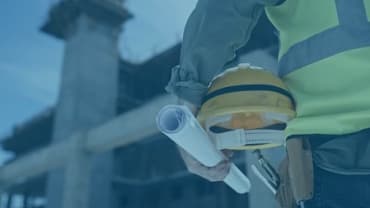In England and Wales, the Defective Premises Act 1972 imposes obligations on those involved in the construction of dwellings to ensure that they are “fit for habitation”. Read on to find out more about the scope of that obligation and how it has been altered following the introduction of the Building Safety Act 2022.
What is the duty & who owes it?
The core duty around the provision of habitable housing is found at s1 of the Defective Premises Act 1972 (“the 1972 Act”).
This duty extends to “a person taking on work for or in connection with the provision of a dwelling”. Any such person is obliged to “see that the work which he takes on is done in a workmanlike or, as the case may be, professional manner, with proper materials” in order to ensure that, in respect of the work they have carried out, the dwelling will be fit for habitation.
The wording in the 1972 Act means that the duty has a wide application. It not only applies to the contractor physically building the dwelling or the developer who is the client on the project. It can also apply, amongst others, to the following groups:
- Architects
- Surveyors
- Subcontractors
However, it has been found by the Courts that this duty does not extend to approved inspectors in the performance of their statutory functions (i.e. to ensure compliance with building regulations). It was held that such a role does not fall within the ordinary meaning of the language set out above; such a person is not “providing the dwelling”.
What is the “provision of a dwelling”?
Previously, the Courts had held that the “provision of a dwelling” under the 1972 Act only related to those instances where the work carried out results in the creation of a new dwelling (i.e. construction or redevelopment).
However, following the introduction of a new s2A into the 1972 Act by the Building Safety Act 2022, the duties now also extend to anyone who is carrying out work (e.g. refurbishment) to an existing dwelling. This significantly increases the scope of the rights under the Act.
What does “fit for habitation” mean?
Now, the million-dollar question: what does “fit for habitation” actually mean?
Unfortunately, this is not defined within the 1972 Act. We therefore have to rely on how the Courts have interpreted this term in previous cases for guidance. Whilst the answer will depend on the factual circumstances of each individual case, “fit for habitation” has previously been held by the Courts to include a dwelling being safe for occupation, pest-free and as having a suitable water supply and drainage.
Who can make a claim?
Finally, it is important to consider who is owed the duty described above and so, in turn, who has the right to make a claim under s1 of the Act. The 1972 Act provides that a wide group of people can make claims, as the duty attaches to the property. Therefore claims can be made by:
- The person for whom the property was provided (for example, the first homeowner of the dwelling);
- Subsequent tenants and owners; and
- Anyone who has a legal or equitable interest in the property.
As with most rights, the ability to raise such claims can be time-barred. However, following changes introduced by the Building Safety Act 2022, the limitation period under the 1972 Act (formerly six years), has been extended:
- For prospective claims – that is to say, claims which are made in respect of works carried out after the legislation came into force – the period is now fifteen years.
- For retrospective claims relating to works carried out before the legislation came into force (28 June 2022), the limitation period has been extended even further to 30 years.
It is important to note that the new thirty-year limitation period does not apply to claims arising under the new s2A of the 1972 Act mentioned above, as these rights are for future claims only.
For more information about the changes coming in under the Building Safety Act visit our Building & Fire Safety Hub.














